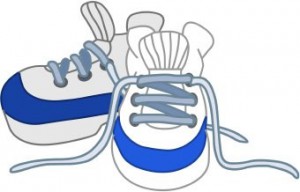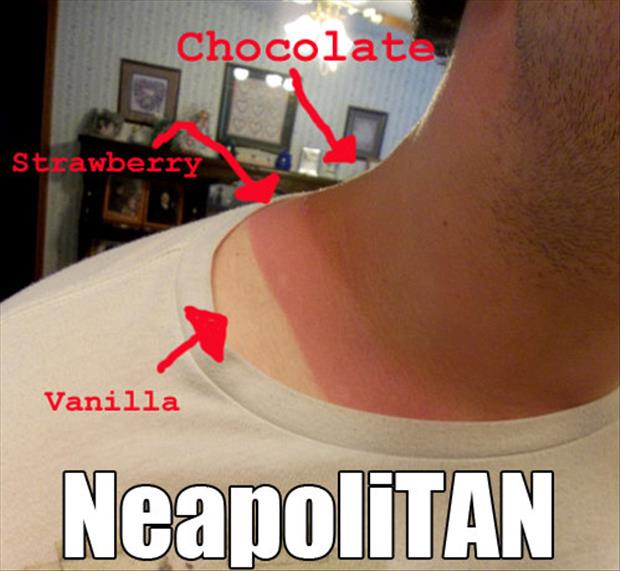
by Marie Arick | May 19, 2016
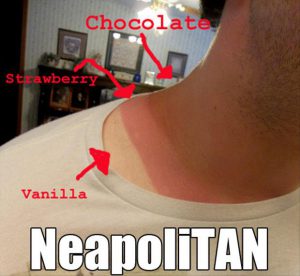
Photo credit: dumpaday.com
May 27, 2016, the Friday before Memorial Day is “Don’t Fry Day.” The “Don’t Fry Day” campaign is meant to spread awareness of the relationship between sun exposure and skin cancer. According to the National Council on Skin Cancer Prevention, every hour, one person dies of melanoma. With summer fast approaching, we all need to adopt sun safety practices if we are not doing so already. Skin cancer is predominately a lifestyle disease, making it highly preventable. According to the Skin Cancer Foundation, “about 90 percent of non-melanoma skin cancers are associated with exposure to ultraviolet (UV) radiation from the sun.” If the outdoors is where you want to be, then be sun safe. Apply sunscreen with a Sun Protection Factor (SPF) of 15 or more at least 30 minutes prior to going outdoors and reapply as directed by the label. Sun protection has become a very important health issue. The following are some prevention guidelines provided by the Skin Cancer Foundation:
- Seek the shade, especially between 10 AM and 4 PM.
- Do not burn.
- Avoid tanning and UV tanning booths.
- Cover up with clothing, including a broad-brimmed hat and UV-blocking sunglasses.
- Use a broad spectrum (UVA/UVB) sunscreen with an SPF of 15 or higher every day. For extended outdoor activity, use a water-resistant, broad spectrum (UVA/UVB) sunscreen with an SPF of 30 or higher.
- Apply 1 ounce (2 tablespoons) of sunscreen to your entire body 30 minutes before going outside. Reapply every two hours or immediately after swimming or excessive sweating.
- Keep newborns out of the sun. Sunscreens should be used on babies over the age of six months.
- Examine your skin head-to-toe every month.
- See your physician every year for a professional skin exam.
Enjoying the outdoors is a wonderful thing, but even better is to do so responsibly when it comes to sun safety and skin cancer prevention. Slip on a shirt and use generous amounts of sunscreen. Wear a hat that provides ample protection of the face and neck. Lastly, protect the eyes with sunglasses. Pay attention to your skin and check often to avoid sunburn. Remember, lifestyle is strongly linked to skin cancer risk, and it is never too late to adopt these practices. Enjoy your summer outdoors by adopting safe sun practices and avoiding overexposures that lead to sunburns and potential health issues later in life.
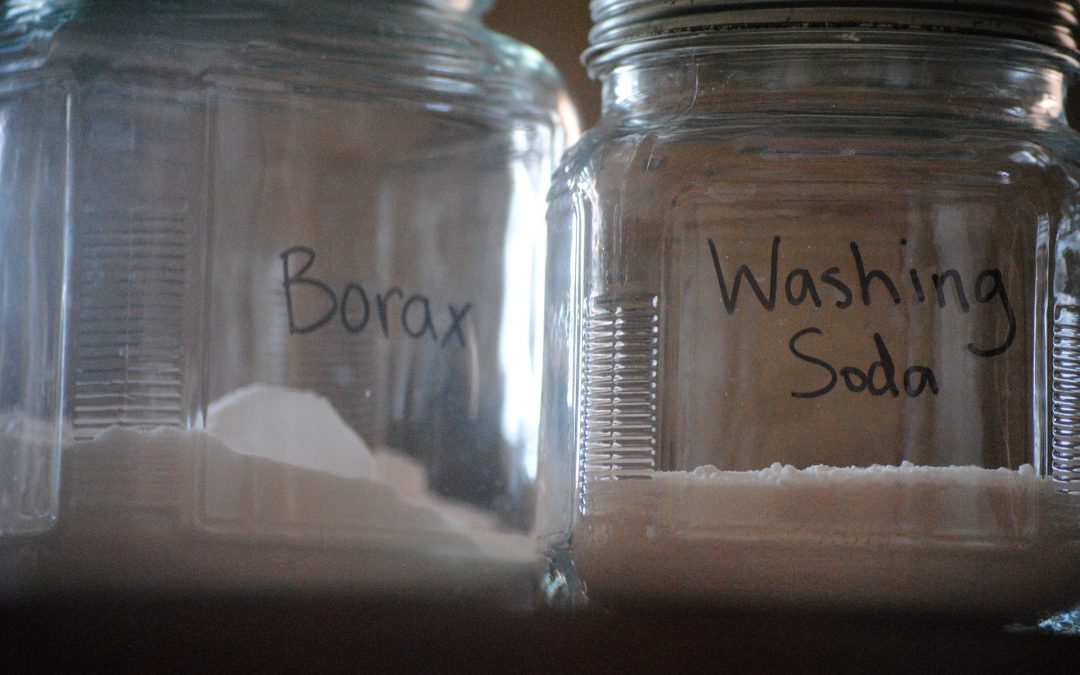
by Judy Corbus | Apr 5, 2016
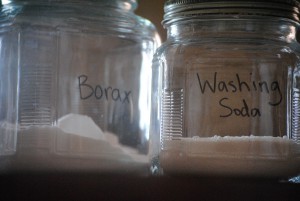 Spring has sprung and this is the perfect time to clean and freshen your house. But you don’t have to spend a lot of money on cleaning products when you can whip up your own with a few simple, inexpensive ingredients.
Spring has sprung and this is the perfect time to clean and freshen your house. But you don’t have to spend a lot of money on cleaning products when you can whip up your own with a few simple, inexpensive ingredients.
The basic ingredient list includes:
- White Vinegar
- Baking soda
- Rubbing alcohol
- Ammonia
- Mild dish detergent
- Washing soda (can be found in the laundry products aisle)
- Borax (also in the laundry section)
Use clean jars or bottles for mixing and storage. Do not use food containers – children can think the contents are something to eat. Also, don’t mix your products in empty cleaning product bottles; residue from the original product may interact with your product, causing a dangerous reaction. Label each product and store out of reach of children. NEVER mix chlorine bleach with ammonia or vinegar – it will create dangerous, toxic fumes!
Here are a few recipes to get you started:
ALL-PURPOSE CLEANER
Mix in a 16 oz. or larger spray bottle:
- 1 cup white vinegar
- 1 cup water
Use on sinks, countertops, lightly soiled range surfaces, floors, toilets, and showers.
WINDOW CLEANER
- 3 tablespoons ammonia
- 1 tablespoon white vinegar
Put in a spray bottle and fill the rest with water.
HOMEMADE LAUNDRY DETERGENT
- 1 bar Ivory® or 1/3 bar Fels Naptha® soap
- 1/2 cup washing soda
- 1/2 cup borax powder
Grate the bar soap into a cooking pot. Add 6 cups of water and heat until the soap melts. Add the washing soda and borax and stir until dissolved. Remove from heat. Pour 4 cups hot water into a clean bucket. Add the soap mixture from the pot and stir. Add 1 gallon plus 6 cups of water and stir. Let the soap sit for about 24 hours and it will gel slightly. Optional: Add 1 ounce essential oil or fragrance oil of your choice.
Use 1/2 cup per load. This is a low-sudsing soap which removes dirt and odor and can be used in high-efficiency machines.
For more product recipes, check out Homemade Household Cleaners and Green Cleaning: Recipes for a Healthy Home.
Sources: Homemade Household Cleaners
Clean It Green!, C. Rogers, UF/IFAS Extension Suwannee County.
by Angela Hinkle | Apr 1, 2016
“Breaking bread”, or eating a meal with others, is a deeply personal way to foster a sense of belonging. Food is a social glue; it brings us together for conversation, a time to catch up, a chance to connect with loved ones, and it fills our bellies as well.
If you wish to “break bread” (with actual bread), here are some nice, tasty bites of information.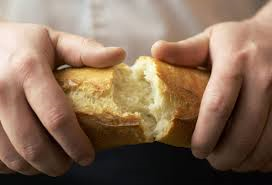
- The hypnotic, heavenly, warm, welcoming aroma of freshly baked bread makes many of us feel that all is right with the world and provides a sense of comfort.
- Researchers have found that the smell of baking bread triggers a positive mood that leads to a higher degree of benevolence, kindness, and concern for the welfare of others.
“Bread – like real love – took time, cultivation, strong loving hands, and patience. It lived, rising and growing to fruition only under the most perfect circumstances”. – Melissa Hill, Something from Tiffany’s
- A fascinating thing about bread is that though it is often viewed as a “poverty fuel”, it can feel like a luxury to even the most monetarily wealthy of individuals.
“”There are people in the world so hungry, that God cannot appear to them except in the form of bread”. – Mahatma Gandhi
- If you’re going to break bread with bread, go for healthy whole grain varieties for plenty of good-for-you minerals, vitamins, and fiber.
Break bread for a healthy life.
by Ginny Hinton | Mar 24, 2016
 Oliver Wendell Holmes, Jr. once said, “The greatest thing in the world is not so much where we are, but in which direction we are moving.” That saying holds true when it comes to our health and our finances.
Oliver Wendell Holmes, Jr. once said, “The greatest thing in the world is not so much where we are, but in which direction we are moving.” That saying holds true when it comes to our health and our finances.
Health and personal financial issues affect millions of Americans. We struggle with epidemic obesity rates, over 79 million Americans have “pre-diabetes”, debt and bankruptcy filings remain high and millions of Americans live on the “financial edge” with less than the recommended three months’ emergency fund set aside for the future. Problems that develop gradually soon become overwhelming.
Many of us, when faced with the need to change, see our problems as unbeatable and “freeze” instead of moving forward. It is true that there is no easy way to lose weight, gain wealth or become debt-free. Even drastic fixes like weight loss surgery or bankruptcy come with huge risks. So, what is the secret?
According to Former HHS Secretary Tommy G.Thompson, small steps are the key! Mr. Thompson stated, “Consumers don’t need to go to extremes – such as joining a gym or taking part in the latest diet plan – to make improvements to their health. But they do need to get active and eat healthier.” No step is too small to get started and you can never be too early or too late. Examples might include walking during your lunch break, cutting out 100 calories a day, saving the change you accumulate each day or tracking your spending for a month. Anything you do daily over a period of time will soon become a habit, or an “automated” behavior. When your healthy behaviors become automated – no matter how small – you’ve just taken a step toward physical and/or financial wellness.
In the end, your health is in your hands. Set realistic goals, take small steps to reach them, learn from the obstacles and believe that you can achieve. And remember, “In the end, the only people who fail are those who do not try.” – David Viscott
Adapted from Small Steps to Health and Wealth, B. O’Neill and K. Ensle, 2013.
by Ginny Hinton | Feb 10, 2016
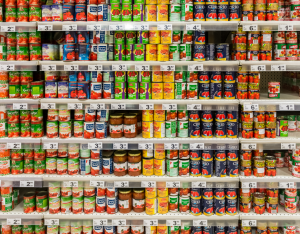 Sometimes canned foods get a bad rap. Often, concerns are valid because canned foods tend to be high in unwanted salt and/or sugar. The good news is that you can buy fruits canned in their own juice and vegetables or beans labeled “low-sodium or” no salt added”. By draining and rinsing your canned produce with water, you can also lower the sodium or sugar content and have a healthful – and inexpensive – solution to balancing your child’s nutritional needs. For example, draining and rinsing canned beans lowers their sodium levels by as much as 41 percent.
Sometimes canned foods get a bad rap. Often, concerns are valid because canned foods tend to be high in unwanted salt and/or sugar. The good news is that you can buy fruits canned in their own juice and vegetables or beans labeled “low-sodium or” no salt added”. By draining and rinsing your canned produce with water, you can also lower the sodium or sugar content and have a healthful – and inexpensive – solution to balancing your child’s nutritional needs. For example, draining and rinsing canned beans lowers their sodium levels by as much as 41 percent.
We know that buying local fresh fruits and vegetables in season is a smart idea but kids can be picky. The Brussels sprouts or turnips that are available in the winter might not appeal to a child who only wants peaches. Benefits of buying canned foods include:
- Most canned fruits and vegetables are packaged within hours of being picked. This means the foods keep their peak flavor and nutrients.
- Canned fruits and vegetables are peeled, cut and ready to use in recipes. They “get you there” quicker and easier, usually with the same or even more nutrition than fresh or frozen. For example, did you know that canned pumpkin has three times more Vitamin A than fresh pumpkin?
- Canned fruit and vegetable selections are available year-round. Canned foods can offer reliable, great-tasting ingredients when fresh produce is not in season.
- Canned foods can be used in recipe “hacks” to improve nutrition. (“Hacks” are tricks that aid in the preparation or reduce the cooking time in recipes.) For example, soups can be thickened with a combination of pureed canned white beans and low-sodium vegetable or chicken stock instead of the traditional – and fattening – flour and butter. Canned evaporated skim milk can be used in equal amounts to replace cream in recipes for a fraction of the fat content.
All in all, canned foods can be used in any season to create a healthy plate. Just watch the sugar and salt content to create inexpensive, healthful and tasty meals your kids will love!
References:
- Kendall, A.R. and Dahl, W.J. (2015). Shopping for Health: Vegetables. University of Florida/IFAS electronic publication: edis.ifas.ufl.edu/fs165.
- Jones, J.B., and J.R. Mount. (2009). Sodium Reduction in Canned Bean Varieties by Draining and Rinsing. 209. Institute of Food Technologists Conference Poster. Anaheim, California.
- Tavoletti, R. (2015). The Time is “Ripe” for Canned Food. Canned Food Alliance. http://www.mealtime.org/article/the-time-is-ripe-for-canned-food.aspx?siteLocation=c8e9a60a-8e4d-45ef-9434-624be5cbf61b
- Lydon, K. (2015). It’s No Trick, Treat Yourself to Better Nutrition with These Recipe Hacks. Canned Food Alliance. http://www.mealtime.org/article/its-no-trick-canned-food-recipe-hacks.aspx?siteLocation=c8e9a60a-8e4d-45ef-9434-624be5cbf61b .
by Marie Arick | Feb 10, 2016
 “Walking is man’s best medicine.” The ground breaking physician Hippocrates, said this around 300 BC. It’s amazing that this still applies today. Walking is one of the easiest exercises that the majority of Americans can perform. So what does it take? Not much – just the personal incentive to get started. Requirements are comfortable shoes and your choice of the place to walk. This can be the local school track, a park, your neighborhood, or even within your own home.
“Walking is man’s best medicine.” The ground breaking physician Hippocrates, said this around 300 BC. It’s amazing that this still applies today. Walking is one of the easiest exercises that the majority of Americans can perform. So what does it take? Not much – just the personal incentive to get started. Requirements are comfortable shoes and your choice of the place to walk. This can be the local school track, a park, your neighborhood, or even within your own home.
The current recommendation is 10,000 steps per day which equates to about 5 miles per day. This is the mission of the US Surgeon General, Vice Admiral Vivek Murthy, and the Shape Up America! campaign (http://shapeup.org/10000-steps/). If you are a couch potato and are just starting out, you can simply time yourself and see how long you can walk before you get tired. Once you have established that amount of time, challenge yourself to walk for a longer time or distance. If you want to get technical, download a free app for your cell phone such as Map My Walk (www.mapmywalk.com/app/ ) or purchase an inexpensive pedometer to count your daily steps and then begin to challenge yourself to exceed that number each day. Every extra effort counts!
Hippocrates realized the need for exercise long before our modern day physicians ever began their studies. Some things are just that simple, so slip on those comfortable shoes and take a walk!
